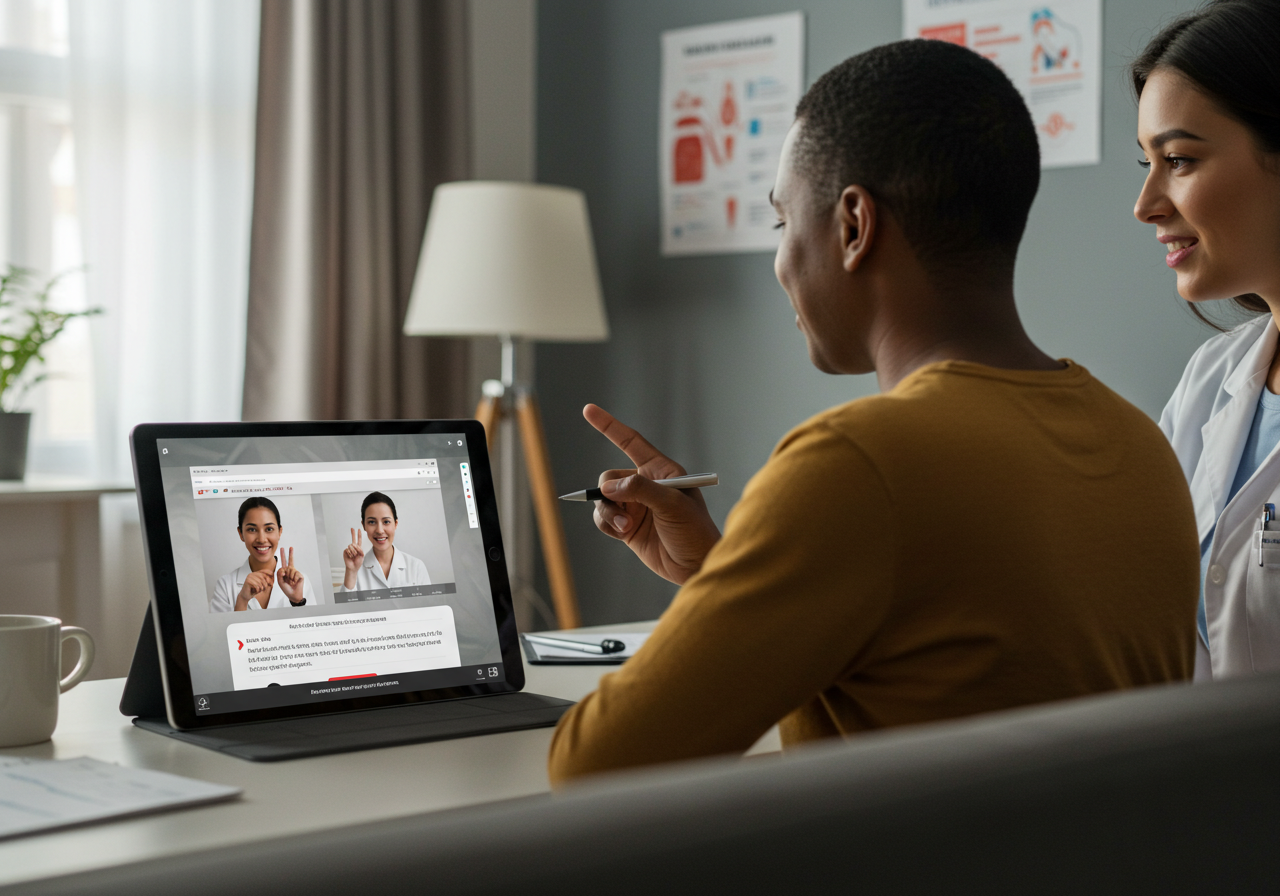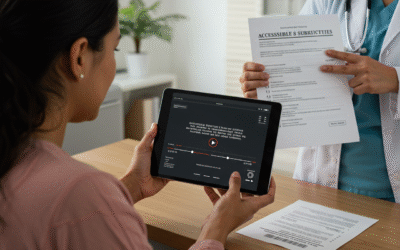Introduction
Sign language interpretation is ideal, but not always feasible. You can still make health videos accessible, understandable and safe for diverse audiences. This article explains practical steps to produce accessible materials without interpreters: optimized captions, plain transcripts, visual aids and user validation.
What you can achieve without an interpreter
With accessibility-focused production you can:
- Improve comprehension for low-literacy viewers.
- Boost retention of critical instructions (dosage, steps).
- Enhance usability in noisy or no-audio environments.
- Create materials ready for future interpreter integration if needed.
Optimized captions: practical rules
- Draft the script in plain language before recording. Use short sentences and active verbs.
- Keep each caption to 1–2 lines and 32–40 characters per line.
- Reading time: min 1.5–2 seconds per caption; max ~6 seconds for long segments.
- Avoid medical jargon or explain terms briefly in plain language.
- Pace the voiceover with natural pauses to ease reading.
Plain-language transcripts
- Provide a plain transcript for patients and a technical version for professionals when required.
- Add timestamps every 15–30 seconds to aid navigation.
- Present instructions in numbered steps and simple tables for dosage or schedules.
- Include a short glossary and visual cues (icons).
Visual design and readability
- Use a legible sans-serif font; minimum mobile size 18–22 px.
- High contrast text/background (semi-transparent panel over busy footage).
- Avoid placing captions over critical visuals.
- Use icons and pictograms to reinforce actions (take pill, schedule, inhale).
- Insert visual pauses between information blocks.
User testing & metrics
- Run usability tests with representative users, including low-literacy participants and deaf community members for comprehension checks (without requiring sign interpretation).
- Suggested KPIs: % correct comprehension, video completion rate, post-view questions, average caption reading time.
Quick implementation checklist
- Plain-language script.
- Synchronized, reviewed captions.
- Plain transcript with timestamps.
- Caption design and pictograms.
- Test with 5–10 representative users.
- Iterate and publish.
Conclusion
When interpreters are not available, accessible captions, plain transcripts and inclusive visual design can make a big difference. At SumaLatam we produce accessible captions, plain-language transcripts and run usability tests with representative users. Want a pilot for your audiovisual materials? Contact us and we’ll design a plan.





